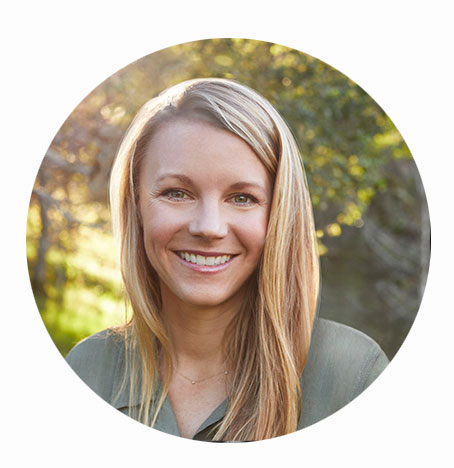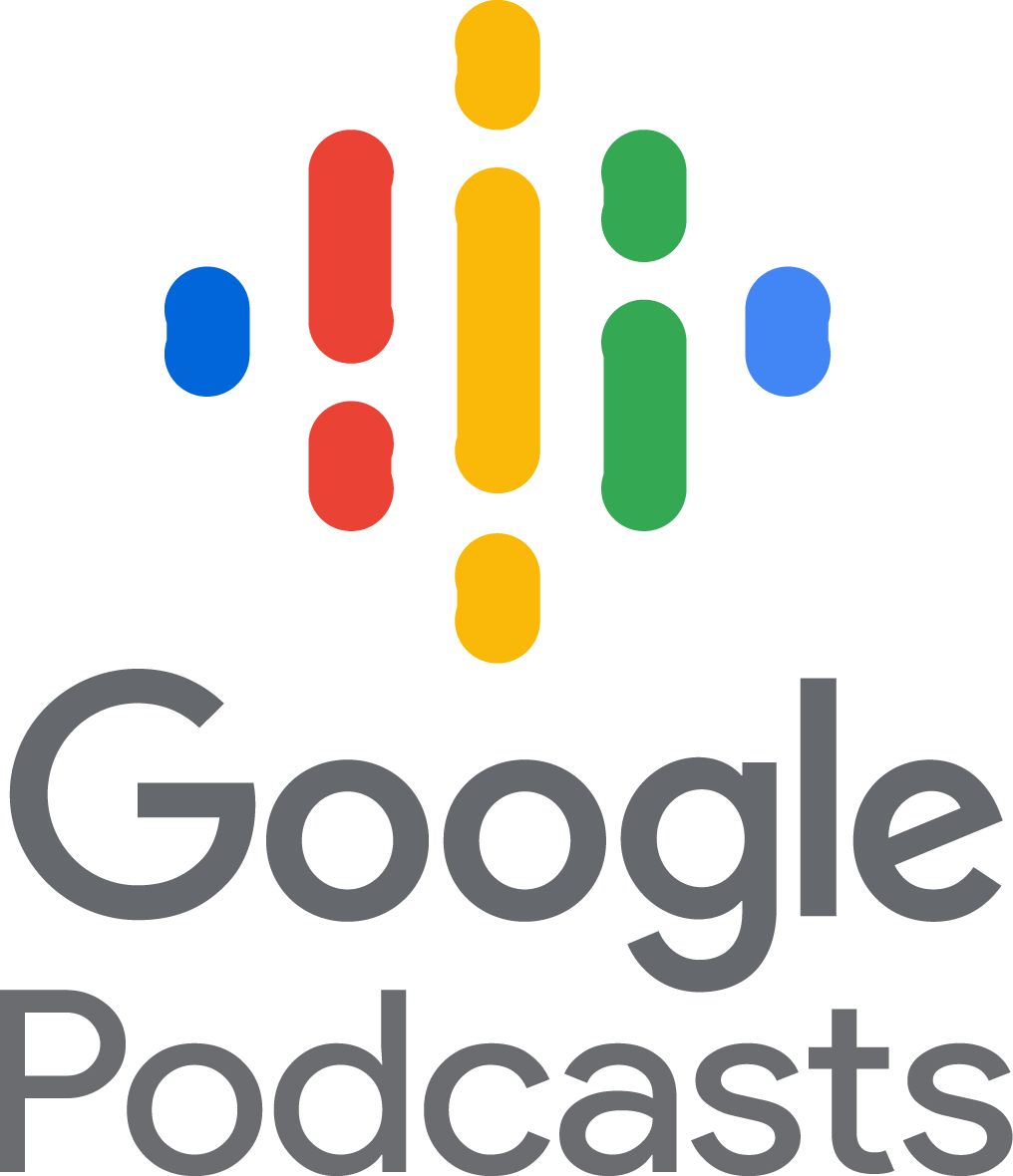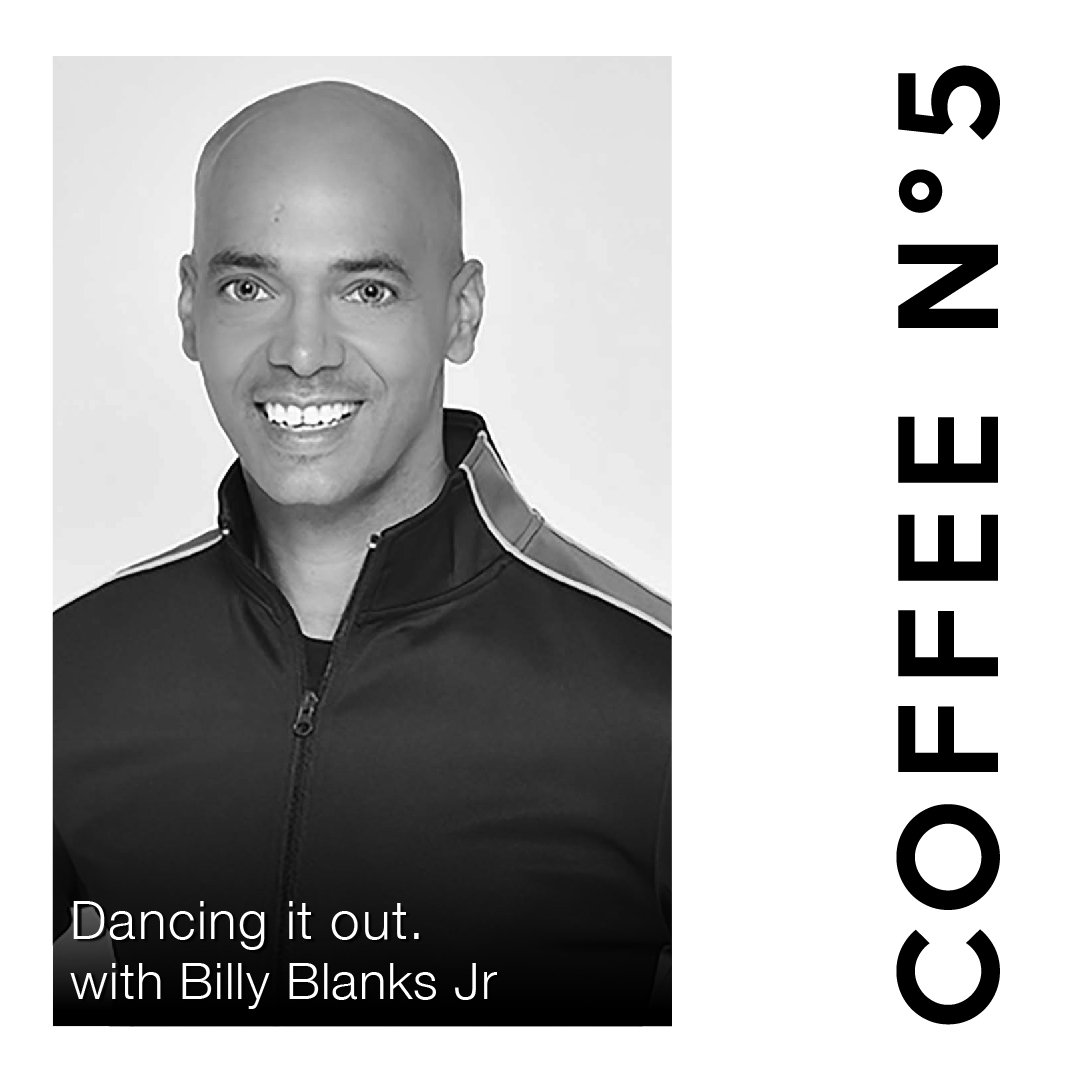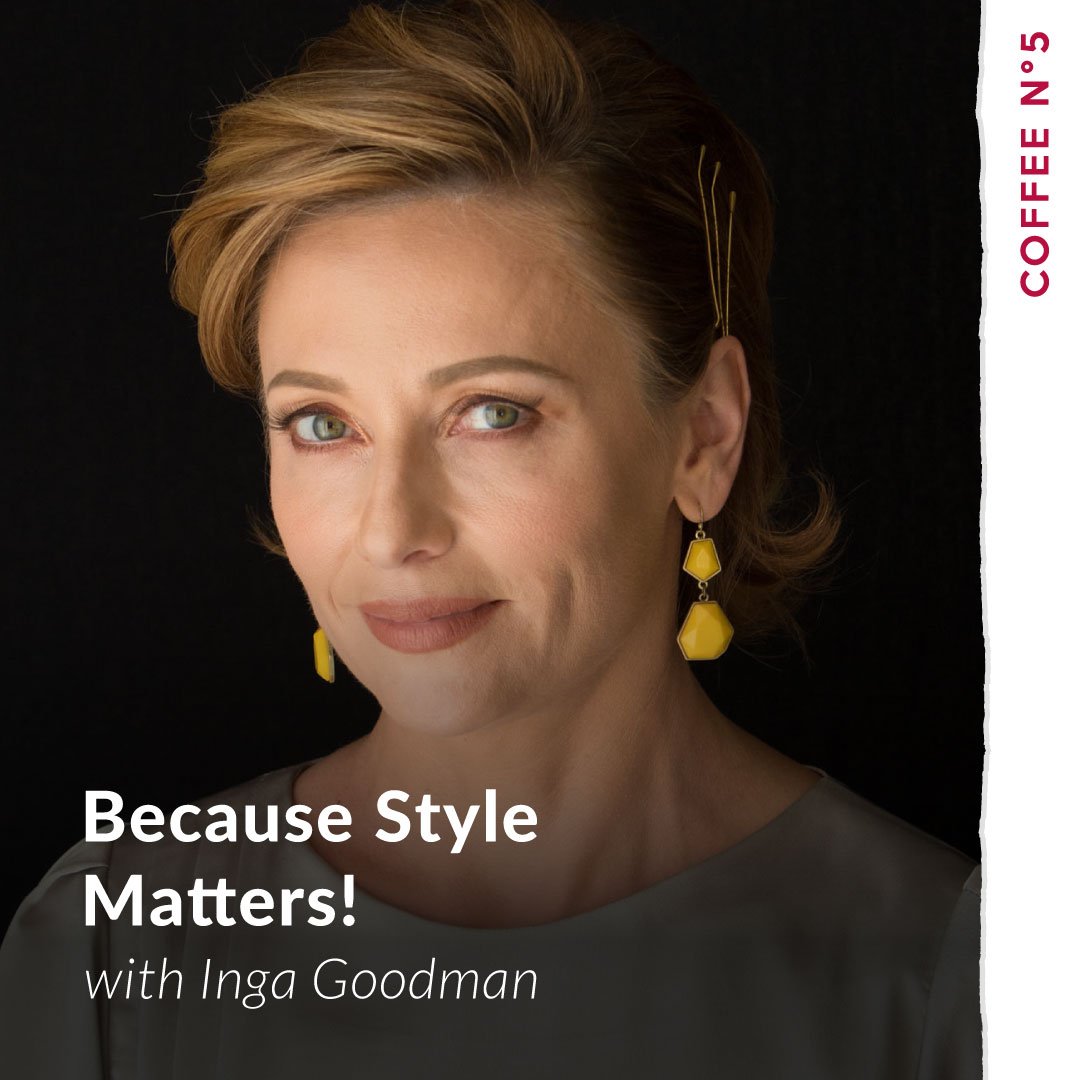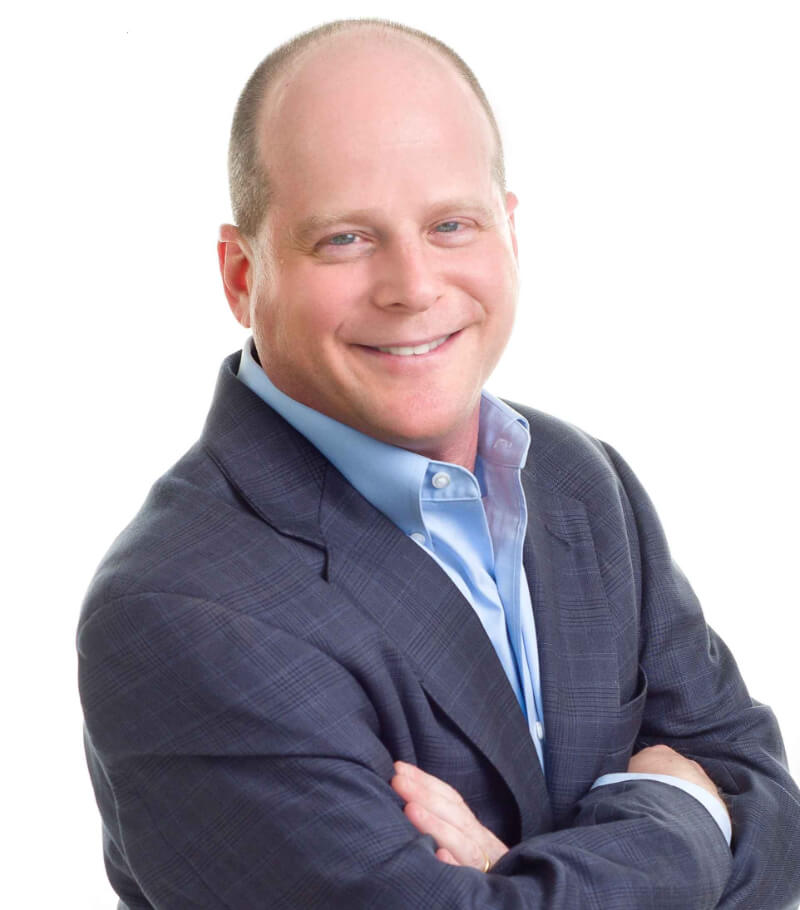Lara Schmoisman
00:05
This is Coffee Number Five. I’m your host, Lara Schmoisman.
Lara Schmoisman
00:12
Welcome back to Coffee Number Five. As everyone knows, I work a lot with the beauty industry. And as most of you guys know, I also launch a skincare life because there are things you do and you have your passion projects on the side. Launching a skincare line taught me so many lessons that I seen it going, my clients going through this, but there are a lot of things that I didn’t have to do because I never had to be part of a formulation. They just come to me when they want packaging or branding. So it made me realize a whole different side of the business. And one side that I wasn’t prepared to deal with was ingredients. Ingredients.
It’s such a big wall that it was unknown for me, but also not only because there’s so many out there are so many rules on ingredients and depends of what you want to do with the strategy. I think now as a marketing strategist, this make me a much better strategist because now I understand that there are different levels of ingredients and where you’re going to be putting your product. Like for example, if you have one ingredient, you know that certain stores will never accept you. And sometimes it’s okay to do it, but you need to know before you create your formula. So were researching in this because this is something I really wanted to talk to you guys about. And I was like, who can I bring in that can have all this knowledge? And my amazing team connect us with Kimberly.
And Kimberly is a founder and CEO of Novi. And we’re going to put all in the chapter notes. But welcome. Kimberly, thank you so much for being here today.
Kimberly Shenk
02:00
Oh, thank you so much for having me. I’m really excited to chat with you.
Lara Schmoisman
02:04
I need to know a little more about this. I mean, give us a little bit of your backstory, how you, I know that you’re a runner. I know that you’re the founder of CEO of Novi. But tell us more, how did you come up with Novi? What’s your story? Story before? And because this is a brilliant idea, by the way. Thank you.
Kimberly Shenk
02:24
It’s actually very interesting how I found my way into this world and I had a very similar experience to you in terms of learning about ingredients and how complex that whole space is. But my background is in data science and tech. That’s what I’ve done actually my entire career in different capacities, working at startups, working in the military, lots of different places where I was just working on data science and I, at 2017, I got pregnant with my first child. And I’ve always been super, like you said, runner health and wellness focused. And this turned into a, whoa, what is it in the products that I’m using? And what am I using to clean my house and put on my face and put in my body?
Kimberly Shenk
03:09
And it was very apparent that a lot of the ingredients were harmful and harmful to my unborn baby. And I got obsessed. And so through that experience, I took the natural point of starting co founding a brand. And so back in 2017, I actually co founded a brand, Naked Poppy. And through that experience, I had something very similar to you, where it opened my eyes to the world of ingredients and ingredient transparency.
Lara Schmoisman
03:40
It’s so fascinating because when I started, the idea of having my brad was because I couldn’t find things that were working for me. I will go to the malls and people will recommend me things that the big brands. But I never called to me to go and look at the ingredients. So when I started doing research and started really reading the labels and say, what I’m putting on my face is when my skin start changing.
Kimberly Shenk
04:08
Yes, yes. So that’s so interesting. And I came at it not knowing any of that. It was more just, oh, I want to know what’s in these products. And I want to have a brand that’s super transparent and gives the information. And my data background was like, oh, I want to build a brand that’s super data focused and transparent. Focused. And that we’ll do that with the ingredients. And I, in that process, learned a lot of what you’re talking about is, oh, there’s different ingredients that cause different things. And there’s all this education that I, as a consumer, didn’t understand at that time.
Lara Schmoisman
04:41
Then you went to the next level and you find out, like, each store has their own rules, which is crazy. I don’t know why we cannot go by one set of rules.
Kimberly Shenk
04:51
Exactly. Differentiation, marketing, all that.
Lara Schmoisman
04:55
No, no, but this is because, for example, when I help a client to do a branding for a new product, the first thing we know is you got feeling. Of course, you do your research, you say, okay, I want to use this product. Sometimes they come already with the formulation so they know what they want to tackle. But also, it’s okay in what stores you envision your products to because depends on the price point. It depends on so many factors. And then we work on the branding for that to make sure that we fit in, but we stand out.
Lara Schmoisman
05:32
Right.
Lara Schmoisman
05:32
But that’s another level that now I understand is, okay, let’s make sure that in that store we can go with all these ingredients.
Lara Schmoisman
05:41
Exactly, exactly.
Kimberly Shenk
05:42
And if you want to get extra distinction, like clean at Sephora, ultra conscious beauty, there’s even more restriction on ingredients and the amount of an ingredient in the product and all these different nuances that it’s super important you as a brand know upfront before you approve a formula, because if you want to get that, you can’t. It’s very hard to go back and make those changes after the fact.
Lara Schmoisman
06:04
Well, you will have to reformulate and then you will have a different product, basically.
Lara Schmoisman
06:09
Exactly. That’s exactly right.
Lara Schmoisman
06:11
So you went from having your own brand.
Lara Schmoisman
06:14
Yes.
Lara Schmoisman
06:15
And now, because that’s, you said that it was 2017, right? And now you were in 2024 and you have this platform. How did you go from and what is your brand today?
Kimberly Shenk
06:28
So as we started to formulate and I got closer to the product development process, I talked with so many different brands about the pain points were having, and I saw it was a very similar pain point across. How do you get more transparency on ingredients upfront? How do you better select ingredients, make sure that your product is going to be compliant? How do we do this at scale? There was all these questions and so I actually started toying with technology and a platform that could start to solve this for our own pain point back in 2019. And through the conversations, it was just really clear that this was something that a lot of brands wanted to use. And so decided to spin out and create a whole new company called Novi in 2020.
Kimberly Shenk
07:13
So I left Naked Poppy, my co-founder, stayed, built the brand, and here I was on another journey of building a software.
Lara Schmoisman
07:21
This is so interesting. Could you predict what is going to happen with the clean beauty boom in the last few years? Because, no, it was intense. What’s going on?
Kimberly Shenk
07:32
It’s very intense. That was actually the bet we made. We said, we don’t think this is a trend. We think this is a fundamental shift in the way consumers are purchasing, and it’s all going to be around clean and sustainable and conscious products in the future. And so we believe a platform needs to be out there to help brands meet those standards and also source ingredients that have been vetted and verified by the actual ingredient suppliers to meet these standards.
Lara Schmoisman
07:57
And you work because what is really interesting, that in this platform, you can work with retailers, you work with brands, but also with formulators and manufacturers, clinical suppliers.
Kimberly Shenk
08:13
It’s a lot. We have a lot of stakeholders.
Lara Schmoisman
08:15
Well, you need to add marketers too, because why not?
Kimberly Shenk
08:19
I know we should just throw that on. No, we don’t.
Lara Schmoisman
08:21
Not today.
Kimberly Shenk
08:22
But.
Lara Schmoisman
08:24
But tell us a little bit how from each point, how these retailers, how the brands, how each one of these peoples of these Personas can use a platform.
Lara Schmoisman
08:35
Exactly.
Kimberly Shenk
08:36
Yeah, I can, definitely. So the main tying piece of this is our mission and the whole reason we exist is to help brands have data, transparency and access to the information they need in order to put better products in market. That’s full stop what we do. But in order to do that, we’ve had to build solutions out for the entire ecosystem. So on the one side of what we do is we help. We are the exclusive platform for a brand to get Ulta, Sephora, Credo. There’s a number of others that we can talk about, hopefully publicly soon. But for brands to get those seals, they are using us to prove that they meet certain standards, but also to understand the standards.
Kimberly Shenk
09:17
So, you know, of course, there’s publicly listed what it means to get into the program, but there’s a lot of nuance. And so they can go in and run a formula before putting it in market and see, will I get the Ulta seal or not? And so that’s the one side of the platform. It’s very educational, but in the case that you’re not meeting a different standard, we don’t stop there. And so this is where the ingredient supplier marketplace comes into play. We offer up alternatives. So you might see you’re using, I always use this example, a glycerin that is not. It is derived from animal byproducts. So you can’t make the vegan claim.
Kimberly Shenk
09:55
Then we offer you alternatives and we say, here’s a bunch of glycerins from suppliers that are derived from palm or responsibly source palm or some other source that you can consider instead. And so then brands bring in their formulators, and that’s where formulators come into the place to look at these ingredients and reformulate. And so the marketplace is actually a place where suppliers are listing all their ingredients. We work with all the big names, but we have exclusive partnerships with them where we offer better pack sizes, small pack sizes, at competitive prices. Because the whole goal is we want to give access to these small brands who would love to have a krota material or an intellect material, but typically you can only buy a huge drum of it and they only need a small pack.
Lara Schmoisman
10:41
I know, exactly.
Kimberly Shenk
10:42
So we are the solution that helps those suppliers down pack into small sizes and sell into these brands.
Lara Schmoisman
10:49
I wish I knew about you guys. I didn’t have any issue that they were out of stock of one of my products.
Kimberly Shenk
10:55
Oh, my goodness.
Lara Schmoisman
10:57
Yes.
Kimberly Shenk
10:57
And so this is a place you can go and discover a potential different ingredient from a different supplier that will meet the same requirements in your formula and purchase it. It’s an actual marketplace.
Lara Schmoisman
11:07
My life could have been so much easier. I hope that it never happened again, but now I know where to go.
Lara Schmoisman
11:15
Yes.
Lara Schmoisman
11:16
So you were talking about, because we have a lot of listeners that are brand owners here, and how do you recommend to start the formulation of a brand? Like, if you know what you want? Because most of the people that they want to start the brand, they are not chemists.
Lara Schmoisman
11:36
Exactly. Yep.
Lara Schmoisman
11:38
They just have an idea or a concept.
Lara Schmoisman
11:40
They have an idea.
Lara Schmoisman
11:41
Where do you start?
Lara Schmoisman
11:43
Yep.
Kimberly Shenk
11:44
Well, the first and most important part is to find a formulation partner who’s usually at a contract manufacturer who understands your values and knows how to formulate to them. And.
Lara Schmoisman
11:56
So hard to do.
Lara Schmoisman
11:58
So hard to do. Interview, ask for referrals, recommendations. We have some people in the show, too, that you can listen, see, it’s really important that relationship, that you feel aligned, that person is responsive, that they will work with you.
Lara Schmoisman
12:14
Exactly. Yep.
Kimberly Shenk
12:15
And I think also that they can prove or show examples of how they developed successful products that have successfully sold in the places that you want to sell and have the distinctions that you want. Now, I know every brand is going to be unique in terms of their value that they’re bringing the consumer, but if there’s real, like, I want to be able to sell in Europe and I want to be able to sell at Sephora and I want to have the clean at Sephora Seal. Like, those things are a little bit more general across brands. And so finding a formulator that has actually made a product and has done those things, I think is really important.
Lara Schmoisman
12:49
It is really important. But also you need to know that as a small brand, it’s very unrealistic that you’re going to get Sephora immediately.
Lara Schmoisman
12:58
Exactly.
Lara Schmoisman
12:59
Or you’re going to go to Ultra. So I want to be very realistic here. And you can aim, you can think about having all these prepared for the future, but also they are very costly processes.
Kimberly Shenk
13:13
Very, very costly.
Lara Schmoisman
13:15
Yes. Yes.
Kimberly Shenk
13:16
And so then that is the trade off, which is if you aren’t able to afford, but you build a formula today and it takes off, there’s the opportunity you potentially might have to reformulate later down the line to get into the stores or get those distinctions, or you can work with a formulator that has at least that experience and background so that you know that you are in a higher likelihood of meeting that in the future.
Lara Schmoisman
13:43
What’s the cost of joining Navi as a brand?
Kimberly Shenk
13:47
Actually, it’s free out of the gate. The cost comes into play when you start to enroll in a retailer program. So that’s just when you start to actually get the seal, improve compliance and all of that. But yeah, just to get in to find formulators, find ingredients, screen your ingredient lists, all of that is free.
Lara Schmoisman
14:05
That’s amazing. That’s amazing. And you’re helping brands. I mean, that is incredible that you can get all this information at the same time you working with providers that can offer small quantities.
Lara Schmoisman
14:21
Yep.
Lara Schmoisman
14:22
Because quantities are also is a big issue for a smaller brand after you mix your formulas and you have a shelf life.
Lara Schmoisman
14:31
Exactly, yep.
Lara Schmoisman
14:32
And from the marketing standpoint, I can tell you that everything takes time.
Lara Schmoisman
14:37
Yes.
Lara Schmoisman
14:38
So, and if you manufacture big quantities, you might need to give away a lot of product at some point.
Lara Schmoisman
14:44
Yep, that’s exactly right.
Kimberly Shenk
14:46
And also, I think sometimes brands, as they’re on that journey, are trying to pressure test whether a formula is going to resonate. And you don’t want to pressure test and do a 20,000 piece run, you want to do a smaller run to pressure test and see if, you know, it’ll take off.
Lara Schmoisman
15:02
Even if you get in a store, in a retail store, they’re not going to put in all their stores, they’re going to put in the testing.
Kimberly Shenk
15:10
That’s great points, actually.
Lara Schmoisman
15:12
Yeah.
Lara Schmoisman
15:12
So they’re not going to be able to, they’re not going to take a huge quantity.
Lara Schmoisman
15:17
Yep.
Lara Schmoisman
15:18
So, and that’s what I see, a lot of brands putting a lot of investment ahead of time in quantities and when you need to put the money in diversifying and putting marketing in quantities. But let’s talk a second about packaging. You help also with packaging. That’s one of the things that I found really challenging. Not designing because I knew what I wanted, but then sourcing the packaging, make it sustainable also, or the most sustainable. People think that sustainable, and sustainability is only in the materials. I found out that sustainability comes in even in creating a lot of quantity and then you need to trash it. That’s sustainable.
Kimberly Shenk
16:03
Absolutely, yep. And it can be in whether you’re doing reusable recyclable or you’re checking to make sure it’s made of PCR, post consumable recycled content or there’s a lot of different ways. Like, are you using an overshell? What’s your labeling? What’s your ink like? There’s so many different ways to address the sustainability conversation with packaging.
Lara Schmoisman
16:29
Shipping, how you shipping, where you manufacture?
Lara Schmoisman
16:34
Yep.
Kimberly Shenk
16:34
Oh, yeah.
Lara Schmoisman
16:35
That’s a huge piece of it, too.
Kimberly Shenk
16:36
Are you bringing it overseas? Are you doing it?
Lara Schmoisman
16:40
You know?
Lara Schmoisman
16:40
Yeah. Even if you use the right materials, just the way that if you’re going to fly it’s a lot more expensive, but also make it less sustainable.
Kimberly Shenk
16:51
That’s 100%.
Lara Schmoisman
16:52
Yeah.
Kimberly Shenk
16:52
And that trade off, I think, is super interesting because if you do go to some of the lower cost options that you can get out of China and things of that nature, it’s like, sure, it’s cheaper, but you’re shipping it over here. It’s probably not. It’s probably just like virgin plastic. Like, there’s a lot of that trade off also depends.
Lara Schmoisman
17:11
You need to always look at the margins. A lot of people, they think that there is huge margins in the industry, that they are beautiful margins. But then it’s such a competitive industry that you realize that all the money that you need to put in advertising or even when you get retail, you’re going to have certain commitments with retail. Right?
Lara Schmoisman
17:33
Right. Yep.
Kimberly Shenk
17:34
So you need to reserve that. And I’m sure you see that a lot actually, with the marketing, how to make sure you’re reserving enough to do an appropriate amount of marketing spend.
Lara Schmoisman
17:43
I see that never is enough.
Lara Schmoisman
17:45
Never.
Lara Schmoisman
17:46
Yes, because there always new opportunities and influencers, they’re pulling money from everywhere. So you really need to pick and choose a marketing budget and work with it and say, okay, this is what I do. It. I never recommend anymore. I used to do this before COVID I used to do long term plans. Now I’m a lot like two to three months at a time because everything changes all the time. Even I see platforms that they change all the time. So you cannot commit for a long time. But let’s talk a little more about packaging and secondary packaging. That’s something that they can do from Novi as well.
Lara Schmoisman
18:28
Yeah.
Kimberly Shenk
18:28
So we have a bunch of packaging suppliers on the platform who list their materials available. And so typically what we see is there’s lower moqs and ability to find sustainable packaging if you’re willing to start within stock. And so we do have a lot of stock material ready to go that’s been fully vetted to be compliant with a bunch of different sustainability vectors that you can search through and find and work with those suppliers and get smaller moqs.
Lara Schmoisman
18:58
But then you need to know that probably you’re going to have another challenge. You’re not going to have the look and feel that you want.
Kimberly Shenk
19:04
That’s exactly right, yeah. And that’s always the challenge that we found. What we’re finding more and more is that because we have a bunch of suppliers listing capabilities and they’re showing packaging options that they can do, it’s an entry point for a brand to say, okay, well, I’d like this bottle to be this shape, or I’d like it to be this color or whatnot. And they can start the conversation with that supplier, but they can still be on the platform sampling different options, and that’s self serve. So you can check out with a bunch of different packaging options you like to sample.
Lara Schmoisman
19:39
My only recommendation is that I can say is that one of the things that I felt so lucky is that I had my team when I was working with my brand is that they understand packaging and they understand the limitations, but also the possibilities.
Kimberly Shenk
19:56
Yes, I agree with you having something expert in that.
Lara Schmoisman
20:00
Yes. That’s so important because when, for example, if you want to go with a smaller stock or a pre made bottle, there are a lot of ways to make it your own, but you need to know what materials and what’s possible and what’s not true.
Lara Schmoisman
20:21
Yep, that’s very true.
Lara Schmoisman
20:22
But you might need to change your idea what you want for your brand and if you want super luxury brand, it might not work for you.
Lara Schmoisman
20:30
Yep, that’s.
Kimberly Shenk
20:31
I think that’s our biggest revelation and even as a brand founder, is flexibility on. If you’re so rigid and set you, it’s. It’s much harder to get exactly what you want to do and be sustainable and meet all these different. But if you’re open minded to different opportunities, you might actually be able to get a wealth of everything.
Lara Schmoisman
20:55
I think that if you are very rigid, the only thing you’re going to end up being is disappointed.
Lara Schmoisman
20:59
Yeah, there you go. That’s so much better. Yeah.
Lara Schmoisman
21:02
Yes, because you totally agree. So many roles in this world. So many. And now you have the new macro laws and that, so it limits you who you can work with.
Kimberly Shenk
21:13
Yes, yes. And we are actually going to be launching this very soon. A capability for brands to automatically register with MoCA, because it’s just a nightmare out there. It’s all data, understanding where it lives.
Lara Schmoisman
21:25
And so that’s so important. So what are right now, the regulations for a brand with mock ra? Because my understanding is that you need to reach a certain level in order to.
Kimberly Shenk
21:37
So if you’re a small business, you do not have to register your products with mock Ra. And the small business requirement, I think is like less than a million and.
Lara Schmoisman
21:47
Revenue, millions of revenue or in sales.
Kimberly Shenk
21:50
Good question. I don’t know that off the top of my head. So I do not want to give incorrect information. All that’s going to be in the product for sure. But if you are below that, you still have to make sure you’re working with a registered manufacturing partner. And I think that’s the biggest trick there is. Your manufacturing partner needs to be registered with mocrum. And so that I think is going to be a more challenging exercise. But outside of that, if you’re above those sales benchmarks, then yeah, you need to be on the hook for registering every single one of your products. And sometimes that’s going to, there’s annual commitment and making sure you’re reporting on that. So we’re wanting to make that super seamless.
Lara Schmoisman
22:37
Yeah. But let me ask you a question, because there is something really important nowadays from Mokra as I see change the beginning of the year that you need to make sure that the providers, that maybe as a small brand it doesn’t affect you, but to make sure that your manufacturers are FDA approved.
Lara Schmoisman
22:57
Exactly. Yep. That’s exactly right. Yes.
Lara Schmoisman
23:01
Even if it’s overseas or whatever you manufacture. Because then I know brands who’ve been stocking customs right now.
Lara Schmoisman
23:09
Exactly.
Kimberly Shenk
23:10
Yeah. It’s very interesting. Our partner who’s going to be helping us do this on the registration side, they’ve been doing this for years and they started in the food industry and they saw the same dynamic happen when the FDA put down a regulation for a registration of food products and the brands that didn’t comply were stopped at customs because they weren’t registered. And so I think it’s very important that deadlines coming up that this is something, a pattern that has been proven in the past. And you don’t want to be in that situation where you’re needing to sell.
Lara Schmoisman
23:41
Products, you can’t get it.
Lara Schmoisman
23:43
Some another thing that I see, and I don’t know how you see this, there are a lot of international brands that are interested in coming to the US market. My background actually, when I started marketing, one of the things I started, I was working in entertainment industry, I was working in distribution, bringing international brands, movies to the US market. And it was a lot of work because we need to market for a different target audience in a completely different language.
Kimberly Shenk
24:15
That’s so interesting.
Lara Schmoisman
24:16
It was fascinating. But the same happened with brands that I seen that even their packaging or even the ingredients list. Culturally, in one country is one thing, in another country is another thing. So you need to understand where you want to take your brand. Do you want to go to Europe? Is that something that you can see in the platform Middle east now? And it’s getting really hot also bringing products. So how can you prepare your products for these territories?
Kimberly Shenk
24:48
Well, the way that we are situated in this is, again, the ingredient list checks, which are, you don’t want to go to market with a product that if in the future you want to sell in the EU or you want to sell in another country that you’re not able to because it can contains ingredients, or you just want to have the knowledge, which is like, well, I’m just going to be launching in the US today, but I know that if I want to go in Europe, into Europe in the next few years, these three are the problem ingredients that I might have to swap out and consider a separate formulation for those countries which, like you said, brands do.
Lara Schmoisman
25:22
Yeah. It’s not only that, even in packaging, there are different regulations.
Kimberly Shenk
25:26
Oh, absolutely, yes. And to be quite honest, it’s across the board now. There’s greenwashing regulations that have come down in Europe and a lot of the claims that us brands make would violate those regulations. And so not knowing that and not being able to understand what you meet and don’t and packaging is included in that is, you know, that’s really important before you go into another country.
Lara Schmoisman
25:49
Yeah. For example, if you decide that you want to go international, one of the things that you need to have is this seven l having all your languages. That’s crucial.
Kimberly Shenk
26:00
Interesting.
Lara Schmoisman
26:00
Yep. Yeah.
Lara Schmoisman
26:01
And another thing that I, I found out, actually for brands in other countries, that they were trying to come to the states that they don’t put the ingredients in the package. That’s not something you cannot do here.
Lara Schmoisman
26:16
Yep.
Kimberly Shenk
26:17
That is required. You need to have a legal inky list.
Lara Schmoisman
26:21
Absolutely. So going back to coming back from the brand side, what did you learn that you think that can help other brands owners about your ingredients? Because I know, like, for example, when I started my products, I knew that I wanted specific ingredients and the rest was about working about results.
Lara Schmoisman
26:48
Right?
Kimberly Shenk
26:49
Yep, exactly.
Lara Schmoisman
26:50
Yeah.
Kimberly Shenk
26:50
I think my biggest learning has been most brand founders feel that they have no power in helping to choose ingredients and that’s largely because you’re not purchasing them yourself. So although you might know you want to use jojoba oil, the manufacturer is going to go find the supplier of jojoba oil. Unless you’re a super astute brand, you’re probably not going to go source ingredients on your own. And so I think the biggest thing that I’ve learned is that brands can be a part of the conversation if you’re powered with data that you can bring back to your manufacturer. And so that information is not necessarily only about the ingredient, but it’s also, can they get it in a pack size and a price that will still make your formula affordable.
Kimberly Shenk
27:30
And so from that perspective, that’s a lot of what we’ve worked to build is transparency on price and pack size so that brands are armed with that information to be able to go to their formula and formulator and advocate to say, no, I know there’s something that’s available in the chemical industry that we could use in this formula that meets my goals and also will keep the price down for the formula. So, like, that’s the thing that I’ve learned is breaking down that barrier actually can be really powerful and the brand can be part of the conversation.
Lara Schmoisman
28:01
That’s so true. And something from the marketing side that I can tell you is that when you are formulating your products, look at the list and then see what other products have those. What’s your competition with those?
Lara Schmoisman
28:16
So good. Yep.
Lara Schmoisman
28:17
Because you don’t want to be the same as other product.
Lara Schmoisman
28:21
Yeah.
Lara Schmoisman
28:22
To stand out. So that ingredients is going to be a differentiation point.
Lara Schmoisman
28:27
Yes, yes.
Kimberly Shenk
28:29
That’s so interesting.
Lara Schmoisman
28:30
I mean, I can do a lot of things from the branding, but at the end of the day, your product need to work and need to be unique. Otherwise people don’t buy it again and again.
Kimberly Shenk
28:40
Yeah, that’s a good, that’s really good advice.
Lara Schmoisman
28:43
Well, you gave a lot of ton of advice. You inspire me. Well, thank you so much for being here today. I think that all this information is helping brands to grow stronger only and also more transparent.
Kimberly Shenk
28:57
Yes, that’s, it’s a pleasure. I love talking about this stuff and.
Lara Schmoisman
29:00
Anything and it’s what is so great that I always say that in order to play a game, you need to know the rules and you’re helping so much in putting those rules and.
Kimberly Shenk
29:12
Making them open, available and transparent.
Lara Schmoisman
29:14
Yeah, absolutely. Well, so you guys know how to play the game now. So go to Novi.
Kimberly Shenk
29:19
There you go.
Lara Schmoisman
29:21
And well, thank you so much again for having coffee with me. And to you guys, I will see you next week with more Coffee Number Five. Find everything you need at LaraSchmoisman.com. Or in the episode notes right below. Don’t forget to subscribe. Was so good to have you here today. See you next time. Catch you on the flip side. Ciao. Ciao.

